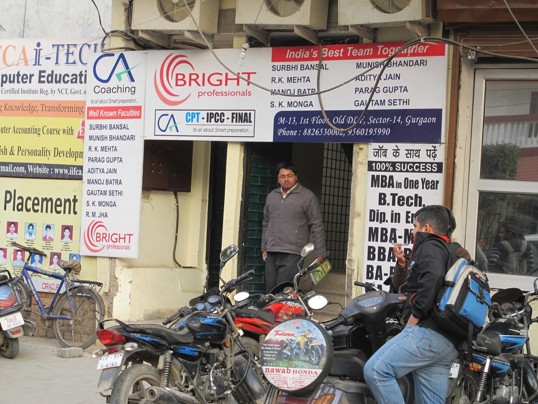By Rama Lakshmi
After studying for two years to be a teacher, Anam Naqvi found out that the degree her school offers is worthless. Now, instead of attending classes and finishing a mandatory internship, she and her classmates protest every day outside the gate to their university in the northern city of Aligarh.
It is a story being replayed across many Indian cities. Poorly regulated, unaccredited and often entirely fake colleges have sprung up as demand for higher education accelerates, driven by rising aspirations and a bulging youth population.

diploma fraud
More than 5 million Indians enter the 15-to-24 age group every year, adding a demographic thrust to the demand for more colleges and universities. Properly educated and employed, these young people could bring the country a demographic dividend, the sort of surge in growth that buoyed many of the Asian “tiger” economies from the 1960s to the 1990s. But if India does not create high-quality colleges for its youths, it risks reaping a demographic disaster.
The higher education commission recently released a list of 21 “fake universities,” many of them no more than a mailing address or signboard hanging over a shop, temple or hole-in-the-wall office space. A government regulator that focuses on technical schools named 340 private institutions across India that run courses without its accreditation. Of more than 31,000 higher education institutions, only 4,532 universities and colleges are accredited.
“India’s university system is in a deep crisis,” said Devesh Kapur, director of the Center for the Advanced Study of India at the University of Pennsylvania, who has written extensively on the subject. “There are so many regulatory barriers to setting up a college or university that it deters honest groups but encourages those who are willing to pay bribes. Millions of young Indians will have high expectations, paper credentials, but will be poorly educated. We can be absolutely sure that it is not going to be pretty.”
A need for more schools
India aims to raise its college enrollment rate to 21 percent in five years, up from 13 percent now. In contrast, the enrollment rate is 23 percent in China and 34 percent in Brazil. Kapur said that to reach its target, India would have to open one new college every working day for the next four years.
With much of the government’s money directed toward combating rural illiteracy by boosting primary school education, the private sector has filled the gap for colleges. Even so, many of India’s colleges and universities — both private and public — face acute shortages of faculty, ill-equipped libraries, outdated curricula and poor infrastructure, according to a report last year by the Federation of Indian Chambers of Commerce and Industry and Ernst & Young.
Source : washingtonpost






